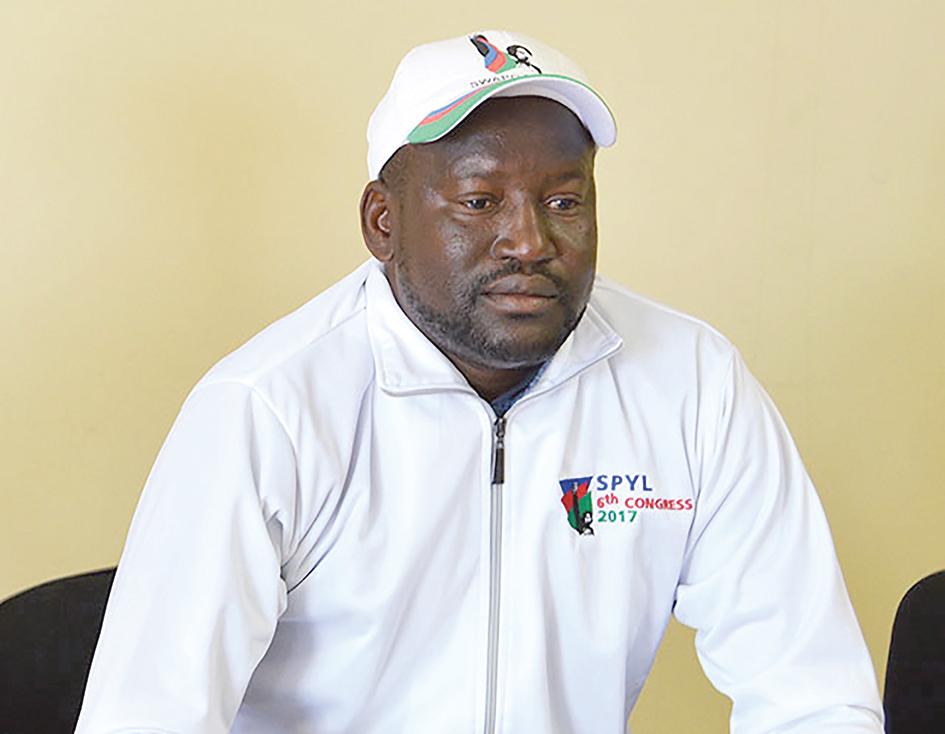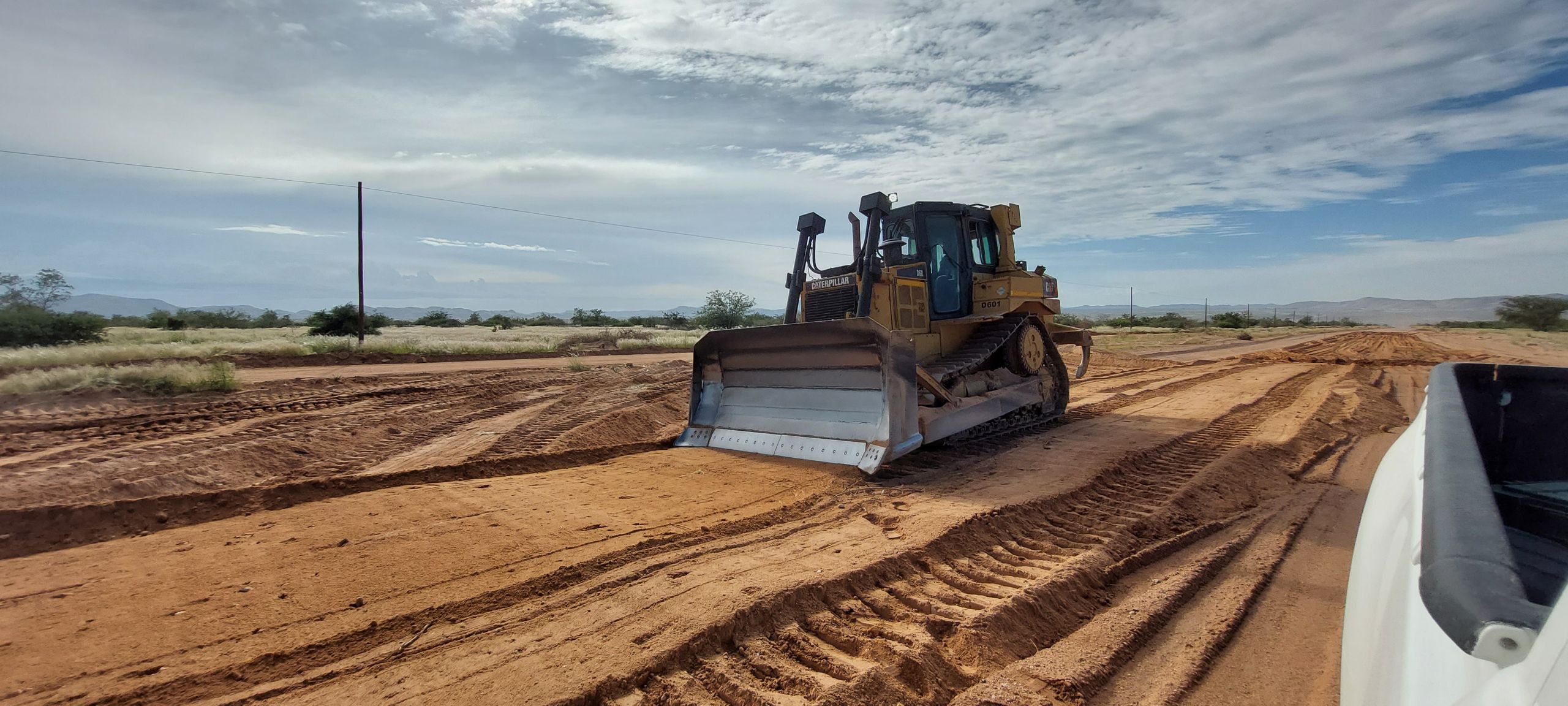THE Erongo Regional Electricity Distributor Company (Erongo RED) has come under a lot of criticism from its customers since its inception on July 1, 2005.
The company was established in terms of the Energy Policy White Paper which forms part of Government’s National Development Plan. The White Paper provides, among other things, for the reorganisation of the electricity distribution industry through the formation of REDs as a means of improving service delivery and efficiency in the electricity sector.The shareholders of Erongo RED are the municipalities of Walvis Bay, Swakopmund, Arandis, Usakos, Omaruru, Henties Bay, Karibib and the Uis Village Council, as well as NamPower and the Erongo Regional Council.The company has 30 000 customers with Walvis Bay (15 500) and Swakopmund (8 000) the two biggest centres.The latest round of criticism came from the Swakopmund Residents Association (SRA) when its chairperson, Wilfried Groenewald, published a public letter last month with a list of charges and complaints.Groenewald charged that the “RED system was costing the consumer substantially more” and that it was “of no advantage to the Swakopmund consumer”.He also requested “that the entire electrical services be handed back to the Swakopmund Local Authority”.The Namibian met with Gerhard Coeln, Chief Executive Officer of Erongo RED, in his office recently and questioned him about the public complaints and accusations.Q: Any new establishment has growing pains during its first year.What would you say has been the biggest challenge for the company over the past year? A: There were several challenges that were equally difficult, as we only had four months to create a new company from scratch.The first was company establishment and staff migration from the different Municipalities into the RED.We had to re-grade every single job, take the whole working life over of employees who had up to 15 years of service, and made sure rights and obligations were adhered to.The majority of staff (95 per cent) came from the Walvis Bay and Swakopmund Municipalities.There were huge differences in salaries which had to be dealt with.The second challenge was the development of systems, such as revenue management, expenditure control, asset management and electrical designs, which were different in every town.A huge challenge is the harmonisation of electrical tariffs (the price per unit) from ten different structures used in each town to get them to one cost reflective tariff.We are still busy with this process – it is not an easy task.We did not get a single cent from Government to start with, and only received N$10 million in total from the company shareholders who paid cash equity contributions.Our monthly bill from NamPower is N$11 million.That is why we are working on an overdraft with very strict financial management as it takes up to two months to get money in from consumers.Our payment to NamPower for electricity makes up 65 per cent of our total cost, and the Local Authorities surcharge accounts for 25 per cent.That only leaves us 10 per cent to play with.Other challenges included establishing technical, customer care and cashier services in eight towns, and recruitment.It might sound like overkill, but a basic office was needed in each town if we were to provide service locally.Uis, for instance, never used to have any technically qualified people.They now have a fully qualified electrician, plus administration staff.On the recruitment side we had to advertise for financial, human resources and administrative staff as only technical people moved over from the Municipalities.Many of them had no previous experience and would make mistakes, although not intentional.That is why we want customers to phone us when something is wrong.There have also been huge delays in the delivery of material ordered from South Africa, causing major problems.We have had to wait as long as six months for material to arrive.Q: The REDs set out to supply and distribute electricity in a more efficient manner to ultimately benefit end users.Can you honestly say this has been achieved at Erongo RED? A: We inherited networks as they were and had to make do with what was there.That meant we had to do a lot of first-aid repairs, as most of them were not in a good condition.There will not be change overnight, but over the past 18 months we have added value to the community in Erongo.Karibib, for instance, no longer has voltage problems and the supermarket fridges are no longer breaking or tripping because of fluctuating voltage.We are getting to the bottom of it.The whole town of Usakos used to trip out when three drops of rain fell.We have to get to some kind of standard as there is no money to replace networks, which require capital investments.We would first have to build up capital.We managed to maintain the standard of Walvis Bay and Swakopmund with reasonably good infrastructure.It took a lot of effort to improve the standard elsewhere in the region.As stated earlier, we established a presence in every town to bring a direct service to each town locally.We are also in a position to use the existing knowledge and skills base of the Walvis Bay and Swakopmund Local Authorities to the benefit of the whole region.Another benefit is that we can buy material in bulk for the company, and no longer need to do it separately for every town.Overall, customers are getting a better deal from us.At Karibib the situation at the Local Authority had worsened to such a state that NamWater had taken over the provision of water to residents.With the establishment of the RED, another problem was taken out of the hands of the Municipality.Q: Erongo RED needs to have an income in order to provide an efficient service.How do you justify an immediate 10 per cent increase in rates after the establishment of the company and a high deposit for new customers? A: The Municipalities used to make tariff adjustments every year as NamPower announced its increases, and we did the same.All increases are approved by the Electricity Control Board (ECB) in order to protect the customer.The ECB approved the ten per cent increase.The REDs cannot increase tariffs at will.Customers must also remember that the late arrival of winter at the coast coincided with the tariff increase on July 1.This meant their consumption went up in winter at the same time the price of electricity went up.Q: Would you say the statement of the Swakopmund Residents Association is fair, implying that the Swakopmund Municipality increased other rates by 10 and 15 per cent because of a loss of revenue from electricity, which meant the Erongo RED system was costing the consumer substantially more? A: Municipalities make profits on the sale of services and this surplus is used to subsidise other non-remunerative services.With the establishment of REDs a Local Authorities surcharge was implemented to be paid by the REDs to Municipalities to compensate for the loss of electricity revenue.We have to pay this surcharge whether we have collected the money or not to ensure the Municipalities do not run into trouble.In our first year the surcharge was N$47.8 million.The surcharge is determined by the ECB after Municipalities have submitted proof of the profit they used to make on electricity.Q: Do you experience problems with the non-payment of accounts, which was a major problem for the smaller municipalities in the past? A: In the beginning we had problems, but our policy of conducting regular public meetings in the region seemed to have made a big difference.We took time to make people understand why they need to pay their accounts.We encouraged customers to bring their accounts of the previous three to six months to help us answer each question and solve their problems.We also took the politicians with us to these meetings to show them we were serious about answering customer questions.In return, customers have seen the benefit, especially when the power stays on when it starts raining.The last month, for instance, we sent out bills totalling N$1.8 million and we received payments for N$2.1 million.The White Pa
per provides, among other things, for the reorganisation of the electricity distribution industry through the formation of REDs as a means of improving service delivery and efficiency in the electricity sector.The shareholders of Erongo RED are the municipalities of Walvis Bay, Swakopmund, Arandis, Usakos, Omaruru, Henties Bay, Karibib and the Uis Village Council, as well as NamPower and the Erongo Regional Council.The company has 30 000 customers with Walvis Bay (15 500) and Swakopmund (8 000) the two biggest centres.The latest round of criticism came from the Swakopmund Residents Association (SRA) when its chairperson, Wilfried Groenewald, published a public letter last month with a list of charges and complaints.Groenewald charged that the “RED system was costing the consumer substantially more” and that it was “of no advantage to the Swakopmund consumer”.He also requested “that the entire electrical services be handed back to the Swakopmund Local Authority”.The Namibian met with Gerhard Coeln, Chief Executive Officer of Erongo RED, in his office recently and questioned him about the public complaints and accusations.Q: Any new establishment has growing pains during its first year.What would you say has been the biggest challenge for the company over the past year? A: There were several challenges that were equally difficult, as we only had four months to create a new company from scratch.The first was company establishment and staff migration from the different Municipalities into the RED.We had to re-grade every single job, take the whole working life over of employees who had up to 15 years of service, and made sure rights and obligations were adhered to.The majority of staff (95 per cent) came from the Walvis Bay and Swakopmund Municipalities.There were huge differences in salaries which had to be dealt with.The second challenge was the development of systems, such as revenue management, expenditure control, asset management and electrical designs, which were different in every town.A huge challenge is the harmonisation of electrical tariffs (the price per unit) from ten different structures used in each town to get them to one cost reflective tariff.We are still busy with this process – it is not an easy task.We did not get a single cent from Government to start with, and only received N$10 million in total from the company shareholders who paid cash equity contributions.Our monthly bill from NamPower is N$11 million.That is why we are working on an overdraft with very strict financial management as it takes up to two months to get money in from consumers.Our payment to NamPower for electricity makes up 65 per cent of our total cost, and the Local Authorities surcharge accounts for 25 per cent.That only leaves us 10 per cent to play with.Other challenges included establishing technical, customer care and cashier services in eight towns, and recruitment.It might sound like overkill, but a basic office was needed in each town if we were to provide service locally.Uis, for instance, never used to have any technically qualified people.They now have a fully qualified electrician, plus administration staff.On the recruitment side we had to advertise for financial, human resources and administrative staff as only technical people moved over from the Municipalities.Many of them had no previous experience and would make mistakes, although not intentional.That is why we want customers to phone us when something is wrong.There have also been huge delays in the delivery of material ordered from South Africa, causing major problems.We have had to wait as long as six months for material to arrive.Q: The REDs set out to supply and distribute electricity in a more efficient manner to ultimately benefit end users.Can you honestly say this has been achieved at Erongo RED? A: We inherited networks as they were and had to make do with what was there.That meant we had to do a lot of first-aid repairs, as most of them were not in a good condition.There will not be change overnight, but over the past 18 months we have added value to the community in Erongo.Karibib, for instance, no longer has voltage problems and the supermarket fridges are no longer breaking or tripping because of fluctuating voltage.We are getting to the bottom of it.The whole town of Usakos used to trip out when three drops of rain fell.We have to get to some kind of standard as there is no money to replace networks, which require capital investments.We would first have to build up capital.We managed to maintain the standard of Walvis Bay and Swakopmund with reasonably good infrastructure.It took a lot of effort to improve the standard elsewhere in the region.As stated earlier, we established a presence in every town to bring a direct service to each town locally.We are also in a position to use the existing knowledge and skills base of the Walvis Bay and Swakopmund Local Authorities to the benefit of the whole region.Another benefit is that we can buy material in bulk for the company, and no longer need to do it separately for every town.Overall, customers are getting a better deal from us.At Karibib the situation at the Local Authority had worsened to such a state that NamWater had taken over the provision of water to residents.With the establishment of the RED, another problem was taken out of the hands of the Municipality.Q: Erongo RED needs to have an income in order to provide an efficient service.How do you justify an immediate 10 per cent increase in rates after the establishment of the company and a high deposit for new customers? A: The Municipalities used to make tariff adjustments every year as NamPower announced its increases, and we did the same.All increases are approved by the Electricity Control Board (ECB) in order to protect the customer.The ECB approved the ten per cent increase.The REDs cannot increase tariffs at will.Customers must also remember that the late arrival of winter at the coast coincided with the tariff increase on July 1.This meant their consumption went up in winter at the same time the price of electricity went up. Q: Would you say the statement of the Swakopmund Residents Association is fair, implying that the Swakopmund Municipality increased other rates by 10 and 15 per cent because of a loss of revenue from electricity, which meant the Erongo RED system was costing the consumer substantially more? A: Municipalities make profits on the sale of services and this surplus is used to subsidise other non-remunerative services.With the establishment of REDs a Local Authorities surcharge was implemented to be paid by the REDs to Municipalities to compensate for the loss of electricity revenue.We have to pay this surcharge whether we have collected the money or not to ensure the Municipalities do not run into trouble.In our first year the surcharge was N$47.8 million.The surcharge is determined by the ECB after Municipalities have submitted proof of the profit they used to make on electricity.Q: Do you experience problems with the non-payment of accounts, which was a major problem for the smaller municipalities in the past? A: In the beginning we had problems, but our policy of conducting regular public meetings in the region seemed to have made a big difference.We took time to make people understand why they need to pay their accounts.We encouraged customers to bring their accounts of the previous three to six months to help us answer each question and solve their problems.We also took the politicians with us to these meetings to show them we were serious about answering customer questions.In return, customers have seen the benefit, especially when the power stays on when it starts raining.The last month, for instance, we sent out bills totalling N$1.8 million and we received payments for N$2.1 million.
Stay informed with The Namibian – your source for credible journalism. Get in-depth reporting and opinions for
only N$85 a month. Invest in journalism, invest in democracy –
Subscribe Now!










